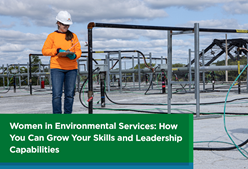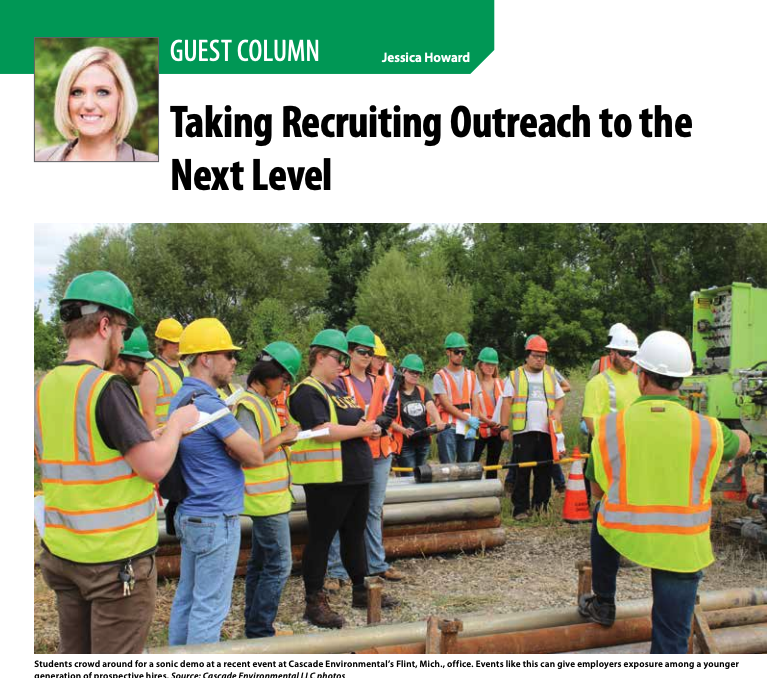3 Steps to Recruiting Field Staff Through Effective Pipeline Management
By: Jessica AlexanderRecruiting and retention is a pain point across the environmental services industry, particularly in skilled labor roles. In an industry so lean and niche, it’s becoming more critical than ever to foster and build a continuous pipeline of applicants.
When we refer to an applicant pipeline, it can mean applicants who have expressed interest in working for your organization, or applicants who have not expressed interest, but may meet the minimum requirements or be an ideal candidate for a role within your company. These are more commonly referred to as active (already applied) and passive (have not applied) candidates.
While there is no easy solution to building and managing a continuous pipeline, this blog post will help you choose your tools, build your workflows, and convert your pipeline to hires.
If you’re still working on even finding potential job candidates to track, read our previous posts about how to attract a diverse workforce, how to partner with schools to recruit students, and how to engage with veterans who may have existing skill sets that overlap with drilling and technical services.
CHOOSE YOUR TOOLS
First and foremost, you’ll want to determine how you will build and track your candidate pipeline. For most organizations, the logical solution will involve some form of Customer Relationship Management (CRM) software. Just as it’s used to source clients and aid in sales strategy, a CRM platform can be used when sourcing candidates and developing a recruiting strategy. Should your organization be unable to invest in a CRM platform, other low-cost databases or Microsoft Office solutions can be used to begin building your pipeline.
If you haven’t built a recruitment pipeline before, there are a few pieces of information you want to be certain to capture and track from each potential candidate:
- Contact information, preferably email and telephone number at a minimum
- Types of roles in which they may be interested in
- Source by which you came across the candidate, such as a job fair, college event, or social media outreach campaign
Whatever software you choose, the pipeline will only be as good as the data entered into it. If other people are using the same software and can access your candidates’ information, you should consider identifying one person who “owns” it and is responsible for ensuring the data is current, accurate, and not duplicated.
BUILD YOUR WORKFLOWS
Once you’ve determined how you will capture the candidate data in your pipeline, you can then begin to build it into a workable process for your organization. This is where workflows come into play. You’ll want to address the following five core factors:
- How will candidates be integrated into your pipeline?
- What will happen once those candidates are integrated?
- How will you track candidate sourcing?
- How often will you interact with passive candidates?
- What methods will you use to interact with candidates, such as newsletters, job posting, or corporate announcements?
Answering these questions will help you understand what an optimal workflow will look like for your organization. It will also provide a framework to help you engage the people in your pipeline with information that is meaningful to them and impactful for your recruitment strategy.
CONVERT YOUR PIPELINE TO HIRES
Once your workflows are established and you begin to connect with people at various stages in your pipeline, you will start to identify potential hires you may have otherwise missed. As you identify them, it’s even more important to connect with them regularly. Studies have shown that contacting a candidate once, twice, or even three times about a job opportunity is usually not enough to gain their interest. In most cases, candidates had to be contacted or exposed to the organization at least seven times in order to seriously consider the opportunity! Obviously, continuous messaging and meaningful contact is imperative to ensuring your pipeline produces.
Environmental services organizations stand a much better chance of staffing skilled labor and field services positions with an effective candidate pipeline in place. The key takeaway to pipeline management is that it isn’t always a quick win; the most effective pipelines are built and maintained over the course of many years, but will produce results for organizations willing to engage candidates.
Want to learn more about careers at Cascade? Reach out to our Director of Talent Acquisition, Jessica Alexander, at [email protected] or apply today at www.cascade-env.com/careers.






